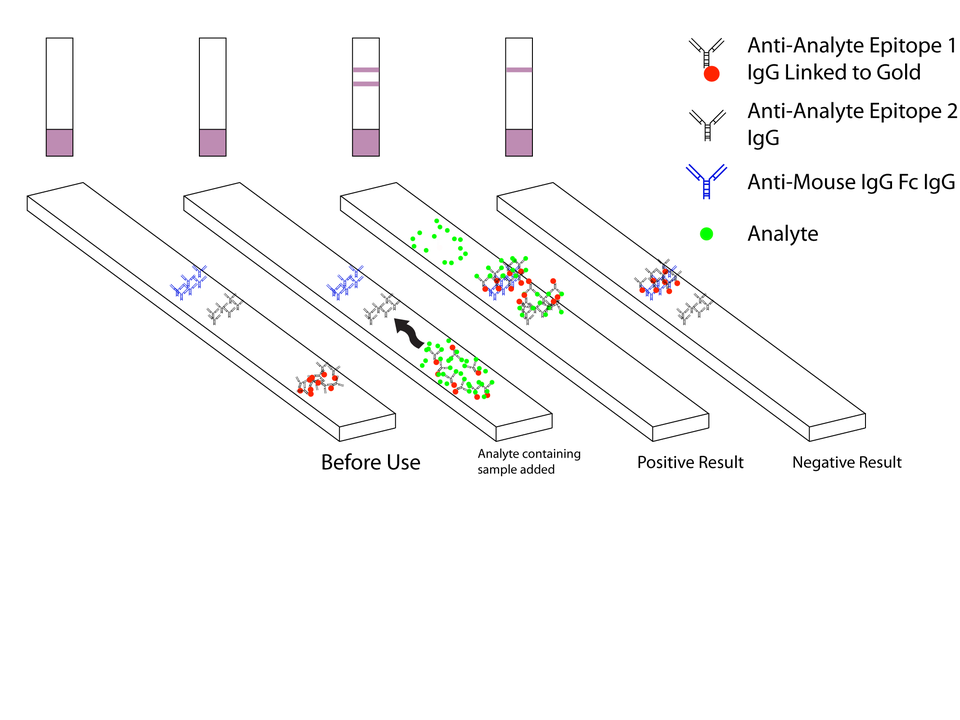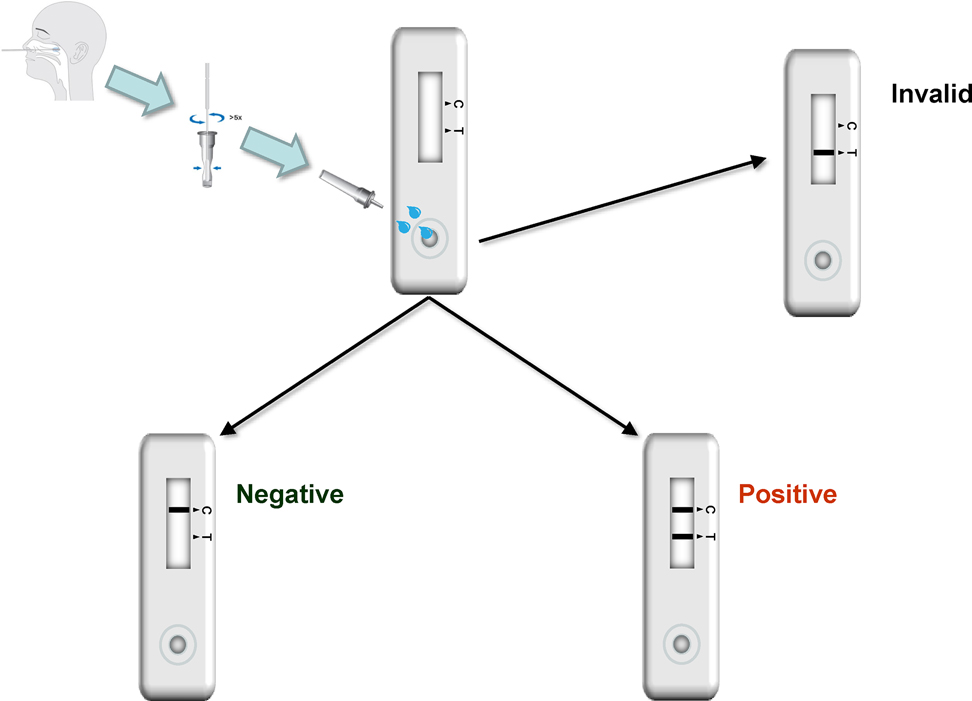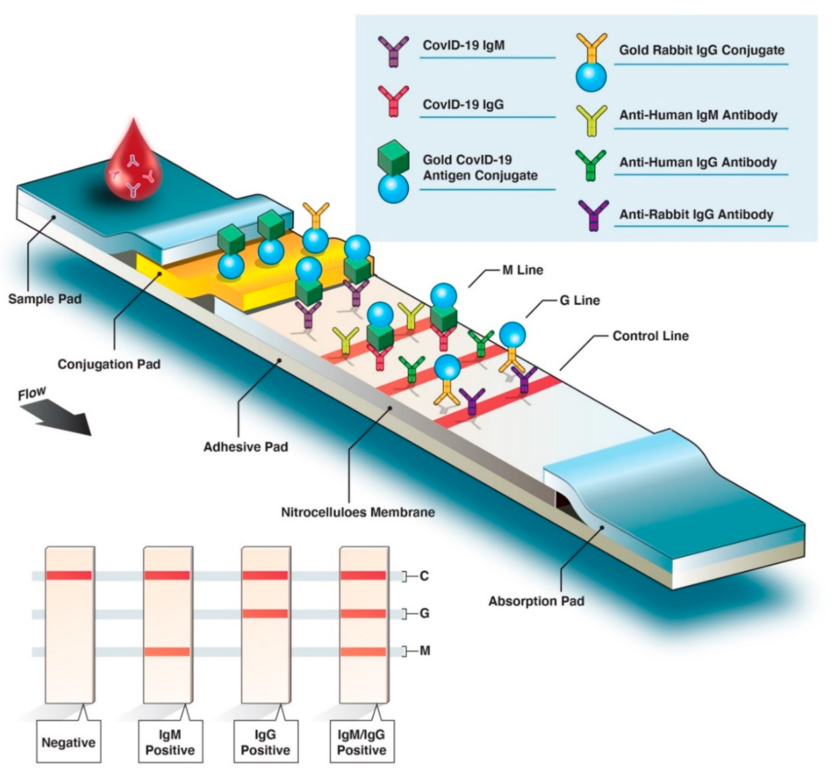Immunological Detection Methods
Immunological Detection Methods
Immuno assays exploit that many proteins bind very specifically to each other (e.g. antibodies to antigens).
Lateral Flow Devices
How Lateral Flow Devices Work
Lateral flow devices work usually as follows [to confirm and cite]: Goals: To goal is to test whether in a substrate to test a certain analyte is present. E.g. for a Covid antigen test, the substrate to test is a nose swab and the analyte are the proteins from SARS-CoV-2 (e.g. the spike protein).
- The substrate to test and some activation substance (called activator) are added.
- If the analyte is present: The analyte binds to some marked substance (called marker here). The marker is e.g. marked with gold nanoparticles or fluorescence color. The analyte consists of proteins of SARS-2 in the case of an antigen test or antibodies against SARS-2 in the case of an antibody test.
- The activator makes the marker flow through the device.
- If the marker is bound to the analyte, the analyte acts as glue between the marker and the test strip. => Test strip gets positive
- The marker or sometimes some second marker substance get bound to the control strip, which indicates that the substance have flown through the device in other words the activator has correctly induced the flow.
The following graphic by Ian M Campbell (https://commons.wikimedia.org/w/index.php?curid=4842091) illustrates the process:

Antigen Tests
An antigen test works pretty much as shown above with the analyte being one of the SARS-CoV-2 proteins mostly the S protein. Practical usage is visualized as follows (picture from Salvagno et al):

Antibody Tests
For antibody tests often the two classes of antibodies IgM and IgG are checked. Therefore these devices have two test strips since two analytes (IgM and IgG) are tested. The graphics by Ghaffari et al shows such a device:

References
Refs Serological Tests
Ghaffari
A. Ghaffari, R. Meurant, A. Ardakani, COVID-19 serological tests: how well do they actually perform? Diagnostics 10 (7) (2020) 453, https://doi.org/10.3390/ diagnostics10070453.